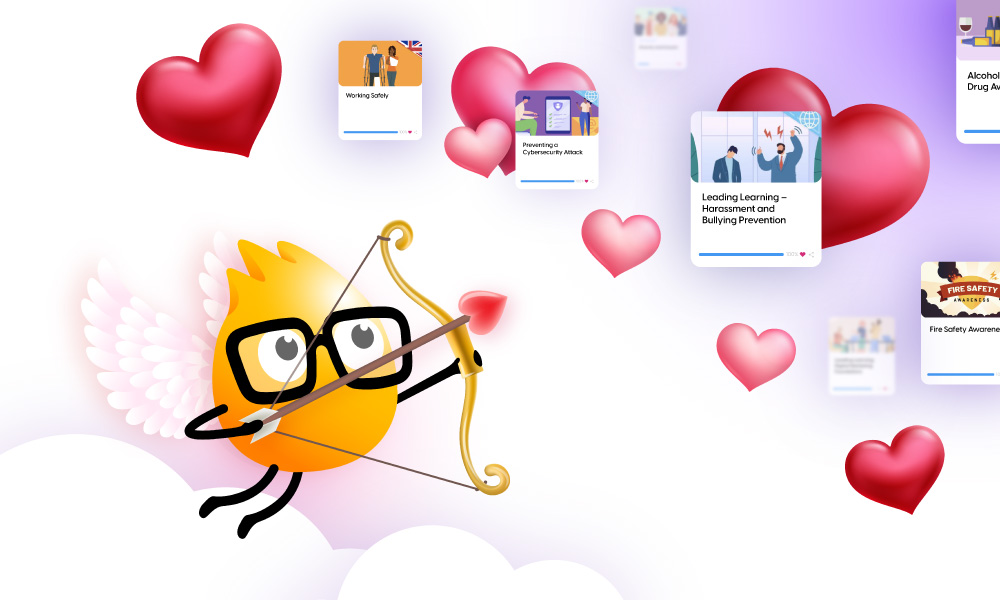Emotion in learning (Part 2)
Before reading this post, please take a few minutes to read Part 1 for important context and info on why emotion is so important to learning and why Emotional Intelligence needs to be considered in learning design. Enjoy, and then meet me back here!
~~~
Emotion in Learning (Part 2)
Lead a horse to water.
Here’s the trick. Remember the old saying: “You can lead a horse to water but you can’t make it drink”? I have heard this countless time when it comes to training. “We can’t make people want to learn”. No, we can’t, but in this case, we can add sugar to the water. Meaning, we can create an environment rich in supporting motivation. Not extrinsic motivation mind you, anyone can give gold stars and badges – it’s better to sharpen a person’s intrinsic motivation to achieve mastery, competence, and confidence.
Reach that place, and you can take learners to amazing places. However, to do so – we must understand the emotions that drive people.
Here’s an example I see often in safety compliance training conversations:
Someone says, “Let’s start the training by saying how much the company has invested in safety procedures”.
Someone else chimes in, “Let’s also show people how much we spend in worker compensation claims.”
Inevitably someone states, “and we need to show the OSHA regulation, so people understand the why”.
Every smiles and nods, “Yes, it’s important people understand the why.”
Is this really the why? Forgo company investment. Forgo stating OSHA regulations. Touch people through emotion:
“The most common injury in this workplace are slips, trips and falls. The most common result of these injuries are people throwing out their backs. This means a minimum two weeks in bed. Two weeks without going to your son’s baseball games, two weeks without being able to lift your new baby, two weeks without being able to help your sick parents.
Here are some testimonials from people in our business who have experienced this type of injury”.
Touch an emotion and you wake something up in people. People may have to participate in safety training, but you can create tools to make people “feel” something and therefore act. Add sugar to the water!
One can only wonder what might happen if we, as learning professionals, seriously used our emotional intelligence and understood its effect on people, when discussing learning design strategies. How might our designs change? How might the outcomes change? What if we moved people enough to provoke thought? So how do we get there from here?
Here are a few ideas to help you design for emotional impact:
- Use story design to convey emotion. People love a good story. In your designs think about elements that make your people curious as to what’s going on, making them want to explore and learn more.
- Use visual design to support the emotions you want to convey. The use of powerful images and supporting colors bring people into your story. Would Psycho be as effective in scaring our pants off if it were in color? Think about powerful supporting images. Let your images help move the emotions forward. This is way better than any 1995 clip art image.
- Create moment of surprise. Tame is uninteresting. When the story is boring, brain activation goes to sleep; but when interspersed with surprising events, brain activation jumps. This can be created using humor or suspenseful actions.
- Call the emotion out!< Speak to the emotion and the emotion will speak to the people. We sometimes tend to back away from emotional triggers, but when appropriate, those triggers can help move the learning moments forward. As in the safety example above - bring in people to speak to the emotion of going home in one piece. This shines a light on reality and context.
The key to making people feel emotionally connected to your learning design, is to create designs that you yourself find to be thought-provoking and interesting. For people to be interested, you must first be interesting. Right?
Remember, the participants in your programs are HUMANS. They are not “learners” or “students” or any other such generic name. And, because they are humans, they have emotions and thoughts. Tap into those and into your own emotional intelligence, and you will see greater success in your training design experiences.






